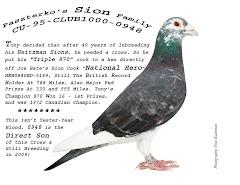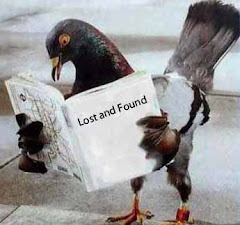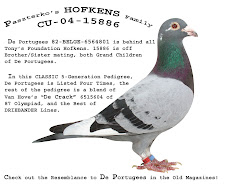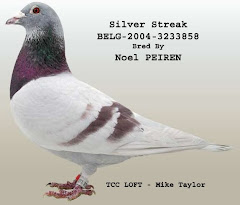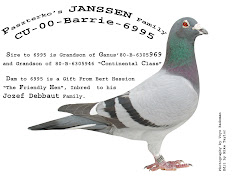By Mons. Pierre Dordin
Published May 1972
American Racing Pigeon News
(Translation of the Federation Colombophile Internationale report from Lille, France, supplied by Col. W. R. Hubbard, Dover, Florida.)
June 1971 the racing pigeon federations of Holland, Belgium, and France sent an S.O.S. by radio, in the press, in favor of the lost pigeons. Thousands of pigeons from each of these countries did not answer the call. What happened on the 5th, 6th, and 7th of June, 1971?
We thought an inquiry should be made. Could we discover an exceptional atmospheric phenomenon which could have hampered or disordered the orientation sense of pigeons?
The quick emotion caused by these disasters has again brought forth the old theories - theories long ago belied by facts and experience. All the great human inventions, in their time and order, have been accused of disturbing the extraordinary and mysterious faculty of orientation in the pigeons; electricity, then wireless, atom bomb, and last - radar. [could we not today, include cell phone technology]
It seems useless to answer all these suppositions, because when atmospheric conditions are good, in spite of all these inventions, the pigeons keep their bearings as well, if not better, than when we used candles for lighting. Radar is most blamed in spite of serious and precise experiences accomplished.
We went by plane personally, on a Sunday morning, to watch over and around a very powerful military radar post. We have seen numerous flights of pigeons, Belgian, Dutch, and French; no deviation, no hesitation, no reaction. The pigeons kept on following exactly the line of flight they had adopted. Radar has no influence on our pigeons.
This inquiry was decided upon by the ministerial concourses of the Poitiers branch of the first region. Fourteen concourses liberated 8,000 pigeons on the early morning of June 7. It was eight days before all the prizes were claimed. The first prizes were won at a very low speed, about 4 to 5 hours later than normal.
Are we to blame the "solar wind" which our scientists claim is the source of magnetic perturbations on the ground, like "aurora polaris" and magnetic storms? The mechanism which transfers energy from solar wind to magnetosphere is not yet known. In these conditions let us not rush in study of that science at its start, the said science cannot bring us any practical utility, for up to now, it is impossible to foresee and avoid these perturbations.
This is not the first inquiry into abnormal disasters. The first inquiry into the August 2, 1964, disaster brought us to the conclusion of the presence of a phenomenon we have not seen since. During three days in 1964, our pigeons were as "deboussoles" (lost their compass), not receiving waves, unable to get bearings, and the weather was not bad. Orientation was disordered. After the third day, brutally, the birds returned in great numbers; orientation had come back.
In 1968 the cause of the disasters was the bad atmospheric condition. Our convoyers took some risks, unfortunately it turned out for the worse.
1971? We have asked the administrative services of France and Belgium for an important work. At the beginning of June, we sent a form to each pigeon owner who lost a marked bird which asked him to inform us where and when his pigeon had be released, and when it should have homed. 565 questionnaires were sent, of which 143 went to the Dutch and of these no answers were received. Answers were received from the Belgians and the French, but not as many as we had desired. A large number of answers is always indispensable if one wants to draw serious and indisputable conclusions. We can say, however, that a majority of pigeons marked by the concourse of Poitiers were found south of the Loire, not very far to the east, northeast of Poitiers; some more to the east, as far as Germany.
We received numerous letters from French fanciers with some information which was more or less useful, on what they had seen, telling how and what they had done to save the lives of our birds in peril.
Study of Concourse Results: We thank the Administrative Services of the Royal Belgian Colombophile (racing pigeon) Federation and the French club presidents who passed on to us an important number of results for the races held on these three dates. These results when studied, were invaluable.
All the races of that period, French and Belgian, flying from north to south, east to west, west to east, or south to north, were very distressing. In many cases it took as long as two days for all prizes to be claimed, even for the short distances.
Meteorological Bulletins: We have them all - from all the weather stations of the French airports. This same information is furnished to convoyers before their decision to liberate and is in addition to information received by radio or telephone from convoys stationed at other points of liberation.
We will not discuss the Dutch race from Orleans with 28,000 pigeons liberated on June 5. After two days only 1,400 returned. These were certainly heavy losses.
The Belgian races from Brive were hard, but not as murderous. The pigeons were liberated at Brive after the fog had cleared. The weather was cloudy, intermittent showers, visibility improving during the day. Although this was a hard race, it could be called successful despite the bad weather.
On June 6, weather continued cloudy, visibility insufficient in the morning due to fog. The fog rose slowly allowing a few flights but speed was reduced. Classifications were at a nominal speed of 800 meters per minute, which is still bad. The races beyond Paris lasted for two days when normally they are only 30 minutes!
Numerous races were held over to June 7 as official weather forecasts were better for that Monday. In Paris and north of Paris, visibility was improving and by eight o'clock, was 8 kms., in spite of cloudy weather; morning fog was lifting, varying according to location. As soon as visibility was sufficient, flights were started at various points. All were hard races and lasted two days.
Fourteen concourses from the north of France released at 6:10 from Poitiers. It was a drama - the mist rose and thickened in the morning. No pigeons could escape. In such mist the pigeons are taxed to the extreme limit of their strength, with feathers wet and turned into sticks. The first to return was four hours later than normal. On that particular day, the weather bulletins from Poitiers were not conducive to release at 6:10.
A convoyer should know what the weather is on the first 50 kilometers of the line of flight.
A convoyer should know what the weather is on the first 50 kilometers of the line of flight.
There were two other releases from Poitiers that day, one southward toward Bordeaux at 25 kms., and this ended the night of the same day; the other, northward toward Argenton 230 kms., none returned on the day.
Finally, for the information of those fearing that the days passed in the baskets could be fatal, 400 pigeons scheduled for release on Sunday, June 6 for Rouen 600 kms., were liberated Friday, June 11, when visibility had come back. Results were perfectly regular, ending on the following morning.
Conclusion: The bad atmospheric conditions in 1971 were responsible for the disaster. Visibility is essential to achieve a good release.
The number one enemy for the orientation and the flight of the pigeons is dense and widespread fog.
The number one enemy for the orientation and the flight of the pigeons is dense and widespread fog.







